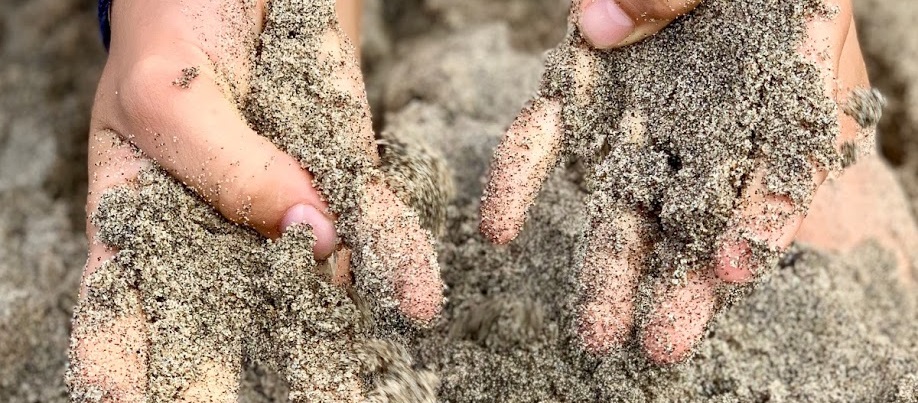Developed by Allegheny undergraduate student Chelsea Contino, in consultation with Professor Emily Yochim
Developed with funding from the Andrew W. Mellon Collaborative Undergraduate Research in the Humanities grant
Ethnographic research often involves participant observation in addition to traditional ethnographic interviewing. Field experiences offer new insight into an interviewee’s words and allow the researcher to experience the lives of their research subjects firsthand, either as an observer on the outside of the situation, or as a more involved participant. In order to get the most out of any experience in the field, a researcher must keep track of the data that they collect. One way to do this is through writing what are called “fieldnotes,” or descriptive prose which document in precise detail a researcher’s experience in the field and can be referred to and analyzed later. Below, I outline the process of writing fieldnotes from beginning to end. Informed by my own experience as well as by the guidelines offered in Writing Ethnographic Fieldnotes by Emerson, Fretz, and Shaw, I suggest how to write rich, descriptive, and helpful fieldnotes that lead to deeper understanding within a research project.
- Observing in the Field
One of the biggest lessons I can offer when it comes to fieldwork is to get outside of your comfort zone. Sometimes, you will be thrown into situations for which you are not prepared. You will encounter surprises along the way and have to navigate new environments as a researcher. You may feel out of place at times. However, it is important to embrace all of these feelings and take advantage of your varying roles in the field. Attempt to focus on all that is happening around you rather than on yourself. As Emerson, Fretz, and Shaw suggest, a researcher should attempt to immerse themselves in the environments of their subjects. In addition, while you should always keep an open mind to all of the events unfolding in the field, remember to pay special attention to the behaviors, dialogue, and other activities that you believe to be pertinent to your research topic at the time. Of course, this focus is always subject to change as you are exposed to more of your subjects’ lives.
- Writing Jottings
What are jottings? To put it simply, jottings are short notes taken down in the field to help a researcher remember details about an experience that they plan to write about in their fieldnotes. Jottings are also helpful in documenting specific dialogue so that you are able to quote the speakers directly in your writing. Finally, jottings are important tools in recording small details that you likely will not be able to remember later. When you later turn to your fieldnotes to begin theorizing, these small details may be important to your overall analysis. If you think something may be important but are not sure if you will remember it, jot it down!
The best way to take jottings is with a good, old-fashioned pencil and notepad. I suggest a small notebook that would easily fit in a purse or pocket. The less intrusive, the better. You may be tempted to record jottings with a note function on your smartphone; however, this may create the appearance that you are texting or browsing social media, even if you are not. In certain environments where you are expected to be a participant as well as an observer, this may seem rude and cause tension between the researcher and their subjects. Use your best judgment to determine what is appropriate in a given field experience!
- Writing Full Fieldnotes
Once you return from the field, it’s time to sit down and type up your full fieldnotes. The sooner you get to it, the fresher the experience will be in your mind, and the more detailed and helpful your fieldnotes will ultimately be. Look back at your jottings in order to remember all the small details that you thought to be important. Weave your notes and observations into a narrative of your experience. Every ethnographer’s fieldnote writing style is different, but, above all, it is most important to be sure to include rich descriptions of scenes and characters throughout your “story.” This form of detailed writing is what Emerson, Fretz, and Shaw call “thick description,” and every ethnographer should strive to achieve it as it will help to make your theorizing richer later.
- Coding
Coding is the process of sifting through your written fieldnotes, being sure to pay close attention to patterns, such as repeated behaviors or similar ideologies, that may come up often across your subjects’ experiences, overall subject attitudes and habits surrounding your topic of study (i.e. media usage), and anything else that may be of particular interest to you regarding your research project. When you begin coding, you will want to adopt a set of “codes,” or groups of phrases which you will use to denote specific themes that occur throughout your fieldnotes. For example, you might use the code “early passion” to denote a subject’s mention of the development of a passion, such as guitar playing, dancing , or writing, early on in life. Further, you may use the code “rushing” or “busy” to describe the overall feel of a space, such as the middle of a college campus. Codes will likely be plentiful and varied at first and slowly become more consistent as you narrow your focus. Remember that it is perfectly fine to pay attention to any ideas of interest! This is the time to explore any and all avenues of interest in your research so that you can truly gain an insight into whatever setting or community that you are studying. You will need to code several times and continue to search for themes that come up multiple times within your fieldnotes. Then, codes will begin to naturally collate into a more concrete set which you can apply to future notes and interviews.
- Theorizing
In this process, theorizing actually comes last. You should always ask a slew of initial questions at the beginning of your research endeavor, but you may not be able to predict the wide range of inquiries you will have before partaking in some amount of fieldwork. Emerson, Fretz, and Shaw introduce a concept called “grounded theory,” in which the researcher pulls theory from her observations, interviews, and coding. Grounded theory is called such because the theories developed are “grounded” in the ethnographic data and created from the voices and actions of the researcher’s subjects. Of course, it is important to remember that the generated theory is still situated within the context of previous research and informed by the researcher’s past academic work. After analyzing your fieldnotes and coding them with care, it may be helpful to write what Emerson, Fretz, and Shaw call “memos.” These are simple documents where you write down any emerging themes and work out concepts and ideas that may have come up while reading over your fieldnotes. It can essentially be treated as a brainstorming document to aid in organization and overall analysis. From there, you are able to develop more focused research questions and move forward with future fieldwork.
For an example of this theorization process, I turn to my ethnographic research course with Professor Yochim, my classmates and I first read several ethnographic texts, including Writing Ethnographic Fieldnotes, not only to introduce us to ethnography, but to give us examples of successful grounded theory work which we could later draw on. We then conducted initial interviews with research subjects, came together to discuss what we heard from those participants, and finally narrowed our focus to four distinct themes which we wanted to develop further and ask more questions about. Then we continued with more interviews and participant observation with our newly defined research questions in mind.
In doing fieldwork, it is important to remember to question everything at first. No action is too small to analyze until you are able to determine exactly the themes which you have a particular interest in developing further. Get outside of your comfort zone. Listen to your subjects and avoid making assumptions or rash judgments. If you keep all these things in mind, you are well on your way to becoming a successful ethnographer!
Lesson Plan and Practice
In order for students to practice their observational, coding, and theorizing skills, it might be a good idea to assign some practice fieldwork outings. These sessions can be done individually or as a group. Preface the experience by discussing the above concepts or even assigning some reading from the Writing Ethnographic Fieldnotes text.
Activity #1: Observing a Space and Writing Jottings
- Assign students either a place on campus or somewhere nearby to observe. You could either send students to the same place during one of your class periods or assign them each to individual spaces to be explored outside of the classroom. For the purposes of getting the full experience of the following exercises, it may be best to assign this task as an out-of-classroom experience.
- Instruct students to observe this space for approximately one hour, being sure to take a notebook and writing utensil in order to record jottings.
- In addition, you may want to instruct students to view the environment through a specific critical lens. For example, during my course, my classmates and I were each given a space to observe within the context of “youth hang-out spots.” Therefore, our focus was on youth and their actions and dialogue at places such as the movie theater or McDonald’s.
Activity #2: Writing Full Fieldnotes
- Instruct students to sit down and type up fieldnotes as soon as possible after returning from the field. Descriptions will be fresh in their minds and their jottings will be more helpful in recalling information.
- Remember to emphasize that the prose they are writing should be a descriptive “story.”
Activity #3: Coding and Memoing
- Tell students to go back and read over their fieldnotes critically. Allow them to practice coding in a broad sense.
- Then, as a class, discuss the types of things you all observed. Determine which patterns and themes may be most relevant to you and ask students to brainstorm a set of codes that would address both what they observed and what they are most interested in researching.
- Finally, ask them to think over possible ideas by writing a brief memo about what they have learned from their fieldwork and which topics they wish to gain more knowledge about.
Source
Emerson, R. M., Fretz, R. I., & Shaw, L. L. (2011). Writing ethnographic fieldnotes (2nd ed.).
Chicago: The University of Chicago Press.
Further Reading in Ethnography
Girl Zines: Making Media, Doing Feminism by Alison Piepmeier
Piepmeier describes the world of girl zines, past and present, in a vibrant way through a rich historical background and illustrated examples of some of the most well-known and diverse grrrl zines around. She approaches this unique culture with curiosity and an open mind, seeking out zine creators to conduct interviews and learn about their own experiences with making zines. This book offers an insight into an ethnographic research project that incorporates voices of zine creators in addition to close textual analysis. Reading it may help you to develop crucial critical thinking skills necessary to the field of ethnography.
Purchasing Power: Black Kids and American Consumer Culture by Elizabeth Chin
Chin, in this book analyzing the consumption practices of urban black youth, gives us an excellent example of ethnographic writing. Particularly good is her seamless incorporation of fieldnote passages into her writing. Transitioning from long passages of fieldnotes to an in-depth analysis is not easy, but Chin offers a great example of how to do so successfully. Yet, she not only analyzes the data she collects, but she creates a story, complete with characters that the reader grows to understand and care about on a deeper level. She chooses to follow, for the most part, 3 main girls throughout the book. This consistency only adds to the narrative aspect of the text. Overall, this ethnographic text is a rather thorough example of how to conduct and write about ethnographic research.
Addiction by Design: Machine Gambling in Las Vegas by Natasha Dow Schüll
In this ethnographic text concerning the lives of gamblers in Las Vegas, Natasha Dow Schüll offers us an extremely deep insight into the minds of gambling addicts as well as the industry that fuels their conditions. Addiction by Design reveals the design logic behind machine gambling and uncovers the reasons behind casinos’ increased player interactivity. Schüll is able to creatively weave together the voices of gambling addicts in between passages of outside research about the casino industry. This work is especially good at showcasing the ability to mold ethnography together with other theory work.
Image from shutterstock.com







